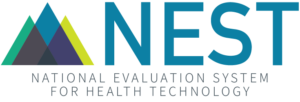Structured interviews of Lived ExperiencE in Patients (SLEEP study) Obstructive Sleep Apnea and Central Sleep Apnea

- Technology of Interest
Positive Air Pressure, PAP Therapy
- Disease Area
Respiratory
- Network Collaborators
HealthCore, PEDSnet
- Duration
14 months
- Status
Complete
Overview
The objective of this Test-Case was to conduct a prospective study of patient-reported outcomes (PROs), patient preferences, and patient experiences to gather patient-generated data (PGD) from patients with Obstructive Sleep Apnea (OSA) and Central Sleep Apnea (CSA) from four populations – adolescents (12—18), young adults (19 – 45), adults (45—65) and seniors (over 65) through semi-structured patient interviews.
OSA is a common medical condition characterized by the periodic collapse of the soft palate and tongue during sleep. While less common, CSA is a disorder in which breathing repeatedly stops and starts during sleep due to improper signals to the muscles controlling breathing. These periods of temporary restriction where air is restricted are called apneas. Over 20 million adults in the United States have OSA, and the prevalence is steadily rising as a result of an increasingly obese population across all age groups. Left untreated, OSA has been associated with obesity, heart disease, hypertension and diabetes among a host of negative health outcomes. The primary treatment is positive airway pressure (PAP) therapy, which maintains an open airway via a pneumatic splint.
The study aimed to identify patient preferences related to the benefits, challenges, risks and side effects perceived when utilizing PAP management of OSA and CSA. Additionally, the study assessed PAP design or delivery characteristics that patients perceived would potentially benefit them the most to improve therapy. Finally, the study assessed patient and parent/caregiver willingness to engage in such activities as PAP design, regulatory approval process, post-market device evaluations and the collection of patient-generated data for safety and efficacy surveillance and coverage decisions.
The ability to work with both HealthCore researchers and PEDSnet University of Colorado researchers, with their access to administrative claims data and pediatric populations identified through electronic health records (EHR) data, respectively, was a key benefit to working with NESTcc and its Research Network.
